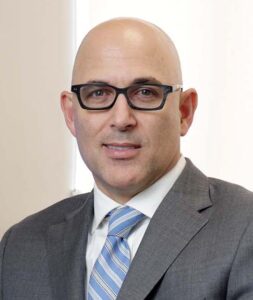Old drugs, new uses

The odds of bringing a new, safe and effective drug to market are very low. Even for drug candidates that make it to human testing in clinical trials, 90% ultimately fail, often because they cause unexpected and serious side effects.
The gauntlet of testing has thwarted so many promising therapies that it has been dubbed the “Valley of Death.” It is one reason why, of the approximately 7,000 known human diseases, there are drug treatments for only about 300 of them.
One way to bridge the gap is to find new uses for already-approved drugs, in other words, to “repurpose” them.
At Vanderbilt University Medical Center, repurposing is being used to develop potential new treatments for cancer that has spread to other parts of the body, for brain “fog” associated with an autoimmune disease, and for facial nerve pain so excruciating that it drives some patients to suicide.
“Repurposing unleashes the scientific promise in all existing drugs that is inherent because of the biological ubiquity and complexity of drug targets,” said Jana Shirey-Rice, PhD, project management team lead in VUMC’s Drug Repurposing Program.
“It’s really inspiring; every couple of months, I hear about a new avenue to faster treatments,” added David A. Edwards, MD, PhD, who is leading the clinical trial of a potential new therapy for the intense, unremitting facial pain known as trigeminal neuralgia.
Since it was launched in 2016 through the Vanderbilt Institute for Clinical and Translational Research (VICTR), the Drug Repurposing Program has tackled more than a dozen projects, some in partnership with drug companies and nonprofit organizations, and some with a global reach.
VUMC is well suited for this effort. During the past two decades, and with remarkable prescience, its basic science and clinical research teams have combined two of the burgeoning medical fields of the future —genomics and bioinformatics — in part to “personalize” the care delivered to individual patients.
“An important strength of our program is the deep scientific expertise of our PhD-trained clinical and translational scientists, coupled with rigorous project management approaches to effectively move hypotheses from ideas to human clinical trials and beyond,” Shirey-Rice said. “This approach to scientific leadership and team science is rare.”
At the center of VUMC’s audacious odyssey is BioVU, the world’s largest DNA biobank based at a single academic institution. The repository holds in deep-freeze storage more than 300,000 biological samples derived from discarded blood collected during routine clinical testing.
The linkage of many of these genetic samples to patients’ de-identified electronic medical records (EMRs) enables researchers to search for associations between polymorphisms (genetic variations) and “phenotypes,” including diagnoses and drug responses recorded in the EMR.
From this connection has emerged a powerful, automated instrument of discovery developed at VUMC called PheWAS, or phenome-wide association study.
To find new uses for drugs already on the market, the Drug Repurposing team employs PheWAS to screen for genetic variations known to be targeted by a given drug, and which are correlated with medical conditions noted in the medical record.
Supported by evidence gleaned from a comprehensive analysis of the medical literature, this approach to finding previously unrecognized connections between drugs and medical conditions led in 2018 to the launching of four phase 2 clinical trials testing the safety and efficacy of repurposed drugs for new indications.
Pharmaceutical companies engage hundreds of people and spend millions of dollars to conduct clinical trials of potential drugs, “but this team has gotten there on a shoestring,” noted VICTR Executive Director Jill Pulley, MBA, a leading architect of BioVU, the Drug Repurposing Program and VUMC’s personalized medicine initiative.
In 2020 VUMC researchers joined a national effort to test repurposed drugs as potential treatments for COVID-19. Among their findings: Two highly touted treatments, hydroxychloroquine, a drug originally developed to treat malaria, and ivermectin, used to treat parasitic infections, did not improve outcomes for patients hospitalized with COVID-19.

“Both hydroxychloroquine and ivermectin were used by many people in the U.S. and across the world who were desperate for COVID-19 treatments,” said VICTR Deputy Director Wesley Self, MD, MPH, VUMC Senior Vice President for Clinical Research and a lead investigator of the two studies.
“By applying rigorous science and clinical trial methods to the study of hydroxychloroquine and ivermectin, we were able to demonstrate these were not the right drugs to treat COVID-19,” he said.
Self, a physician-scientist nationally known for designing and conducting clinical research and for advancing the treatment of patients with severe infections, said drug repurposing methods are critical for maximizing the potential of therapies that have demonstrated safety and are widely available.
“Some of the drugs that we use every day in modern medicine were initially designed for a purpose different than what we now routinely use them for,” he noted.
Metastasis is one of the most troublesome medical conditions in search of an effective therapy. Its impact is also highly disproportionate: Black women, for example, are twice as likely as white women to die from breast cancer that has spread to other parts of the body.
In 2020, the Drug Repurposing team was scanning the genome for new indications for ifetroban, a drug developed initially to treat heart disease. Ifetroban is a potent and selective antagonist of the thromboxane A2-prostanoid receptor (TPr), which regulates blood pressure and coagulation.
The researchers focused on a genetic variation that enhances TPr signaling and is associated with hypertension. To their surprise, they found in the medical records of patients who had that polymorphism another correlation — with cancer metastasis.
When tested in mice, ifetroban potently blocked spontaneous metastasis by multiple types of tumors. That led to a phase 2 safety trial — nearing completion — of the drug in 30 patients with solid tumors who are at high risk for metastasis.
Sonya Reid, MD, MPH, assistant professor of Medicine in the Division of Hematology/Oncology, is leading the trial in conjunction with Cumberland Pharmaceuticals, Inc. The Nashville-based specialty pharmaceutical company owns the license for ifetroban and has provided the drug to VUMC to evaluate for cancer-related indications.

For Reid, who is committed to increasing the diversity of patients who participate in — and potentially will benefit from — clinical trials, ifetroban offers a glimmer of hope, especially for those who have completed standard therapy but remain at high risk for recurrence.
“At least half of patients diagnosed with high-risk triple-negative breast cancer (TNBC) ultimately die due to metastatic recurrence of their disease, and this is what we are trying to prevent with ifetroban.
This study is trying to see (if we) can proactively do something… to prevent recurrence,” Reid said.
“The ability to prevent and/or delay metastasis in the setting of not only TNBC, but many different cancer types at high risk for recurrence, would be truly revolutionary.”
“This study is a powerful example of how the Drug Repurposing Program is meeting its goal of speeding up the drug development process,” said Gordon Bernard, MD, VICTR’s founding director. “Repurposing of drugs never before tested in cancer offers exciting opportunities for future cancer drug development.”
Bernard, the Melinda Owen Bass Professor of Medicine, has been a leader of clinical and translational medicine at VUMC for more than 40 years. In July he relinquished his role as Executive Vice President for Research at VUMC to focus more on his research interests.
Self will succeed him as VICTR director.
Another fruit of VUMC’s Drug Repurposing Program is ClearMEMory, the potential use of memantine, a drug developed for Alzheimer’s disease, to relieve the “brain fog” experienced by many patients with systemic lupus erythematosus.
Lupus results from the misdirected immune system attack on tissues throughout the body, including the kidneys and the brain.
Patients typically have antibodies directed against many different proteins, which can be used to diagnose the disease. These antibodies cause some of the signs and symptoms of lupus, including fever, joint pain, a characteristic facial rash and fatigue.
About half of patients also experience lapses in short-term memory and attention, and a form of aphasia — difficulty finding their words.
Memantine targets a receptor protein in the brain thought to be important in learning and memory, which is encoded by a gene called GRIN2a. While the drug’s effectiveness in treating dementia is limited, studies suggested that it may have a stronger impact on aphasia.
After PheWAS detected a novel association between variations in the GRIN2a gene and lupus, further literature searches and physician chart reviews suggested that the drug might be effective in treating the cognitive problems experienced by many lupus patients.
In 2022 VUMC signed a licensing agreement with Evergreen Therapeutics, Inc., a Maryland-based pharmaceutical company that focuses on the research and development of innovative drugs in autoimmunity and ophthalmology, to conduct a clinical trial of memantine in lupus patients.
The idea is that the drug may block antibodies from attacking and disrupting the activity of the GRIN2a receptor, said Leslie Crofford, MD, professor of Medicine and chief of the Division of Rheumatology and Immunology at VUMC who is leading the clinical trial.
“In my experience, it’s very unique to have the bioinformatics expertise … a data set as large as BioVU … that has genetic information linked to clinical information,” Crofford said. “Drug repurposing at VUMC is a really phenomenal program to stimulate novel ideas that can be taken quickly into (clinical) trials.”
Edwards, chief of the Division of Pain Medicine, is expert at pinpointing the source of facial nerve pain using nerve block.
An anesthetic agent like lidocaine is injected into a damaged or injured nerve to see if it turns off the pain. The problem is, there is no long-term fix for this kind of nerve pain. Or is there?
Several years ago, while scanning the genome for potentially targetable genetic variations that might be involved in pain, the Drug Repurposing team found a polymorphism in the gene for the alpha-2B adrenergic receptor that was associated with trigeminal neuropathy, facial nerve pain.
Fortunately, there was already a drug on the market that stimulates this receptor — guanfacine, which had been approved for the treatment of high blood pressure and attention-deficit hyperactivity disorder.
“We also use it in the operating room and in the clinic as a pill for pain,” Edwards said. “It all made sense. The only step that needed to be taken was to reformulate it as a liquid (combined with) lidocaine so we could do the study and see if it was going to be helpful.”

Edwards and his colleagues reached out to VICTR, and specifically to Kenneth Holroyd, MD, MBA, co-executive director of the Drug Repurposing Program and assistant vice chancellor for Research at VUMC, to assist them in pursuing the research.
The result: a randomized, double-blind clinical trial in 30 patients testing the efficacy of injecting the guanfacine/lidocaine combination into the trigeminal nerve versus lidocaine alone that is nearing completion.
Edwards also is working with Nashville-based Cumberland Emerging Technologies, which supports the development of early-stage biomedical technologies, to submit a federal Small Business Technology Transfer grant application to further develop the reformulated drug.
“If the medication is effective … for one kind of nerve pain, it could be used for many different neuropathic pains,” Edwards explained. “There’s an opportunity to reformulate this as another non-opioid pain medicine, which is really needed as we’re in an opioid epidemic.”
Edwards credited the proactive thinking and foresight of VUMC’s leadership with enabling drug reformulation and repurposing projects like his, which is bringing new hope to people in pain. “It’s wonderful,” he said, “to find something that may help these patients.”
